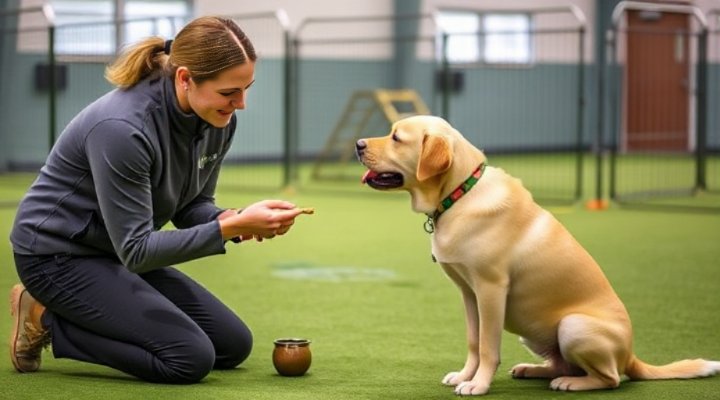If you’re searching for ‘therapy dog training near me’, you’re likely considering transforming your beloved pet into a certified comfort provider. Therapy dogs bring immense joy and relief to people in hospitals, schools, nursing homes, and other facilities. However, not every dog is suited for this special role, and proper training is essential.

What Makes a Good Therapy Dog Candidate?
Before enrolling in therapy dog training programs, it’s important to evaluate whether your dog has the right temperament. Ideal candidates are:
- Calm and patient in various environments
- Friendly with strangers of all ages
- Not easily startled by loud noises or sudden movements
- Comfortable being touched and handled
- Already well-socialized and obedient
If your dog shows these qualities, they might be perfect for therapy dog certification. However, even the friendliest dogs need proper training to handle the unique challenges of therapy work.

Key Factors When Choosing Therapy Dog Training Near You
1. Trainer Qualifications and Experience
Look for trainers certified by reputable organizations like the Alliance of Therapy Dogs or Pet Partners. They should have extensive experience specifically with therapy dog preparation, not just general obedience training.
2. Training Methods
Therapy dog training should focus on positive reinforcement techniques. Avoid facilities that use punishment-based methods, as these can create anxiety in dogs – the opposite of what you want in a therapy animal.
3. Curriculum Content
A good program will cover:
- Advanced obedience skills
- Desensitization to medical equipment
- Proper public behavior
- Handling unexpected situations
- The certification process
Many programs also include basic obedience refreshers as part of their curriculum.

The Therapy Dog Training Process
Quality therapy dog training typically follows these stages:
- Evaluation: The trainer assesses your dog’s current skills and temperament.
- Basic Obedience: Ensuring mastery of commands like sit, stay, and leave it.
- Specialized Training: Exposure to wheelchairs, crutches, and medical equipment.
- Public Access: Practicing calm behavior in various public settings.
- Certification Prep: Mock tests to prepare for the actual evaluation.
Remember that therapy dog certification requires passing a standardized test, so choose a program that specifically prepares for this.

What to Expect After Training
Once certified, you and your therapy dog can volunteer in various settings. Most handlers start with short visits to familiar environments before progressing to more challenging locations. Many training centers offer ongoing support and continuing education opportunities.
The bond you’ll develop with your therapy dog is incredibly special. As one handler shared, ‘Seeing my Labrador light up a child’s face during chemotherapy treatments makes all the training worthwhile.’

Finding the Best Therapy Dog Training Near Me
Start your search by:
- Asking for recommendations from local therapy dog organizations
- Checking reviews of training facilities
- Observing a class before enrolling
- Ensuring the program aligns with your schedule and goals
With the right training, your dog can bring comfort to countless people while strengthening your bond. For more information on dog training options, explore our guide on finding the best dog training classes near you.
Related Keywords: therapy dog training programs, how to train a therapy dog, therapy dog certification near me, best therapy dog training, certified therapy dog training
